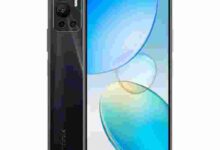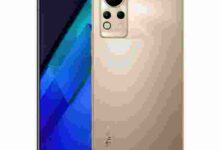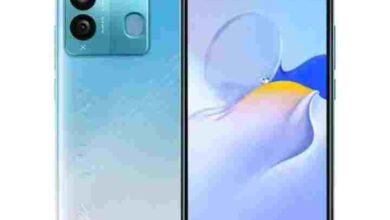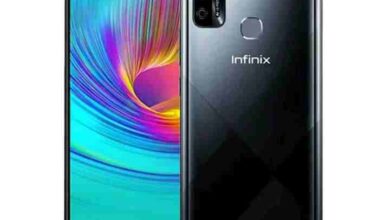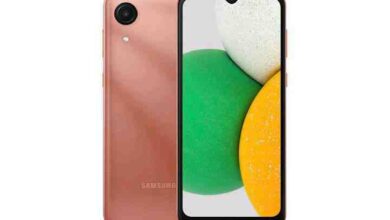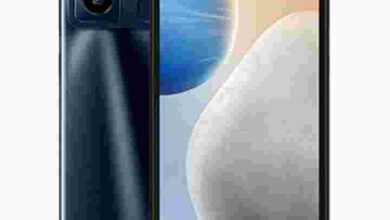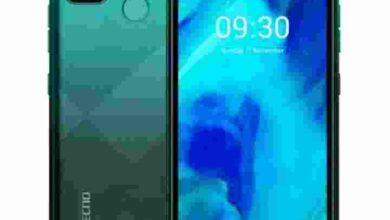Google Pixel 7 Price in Nigeria, Futures and Specifications
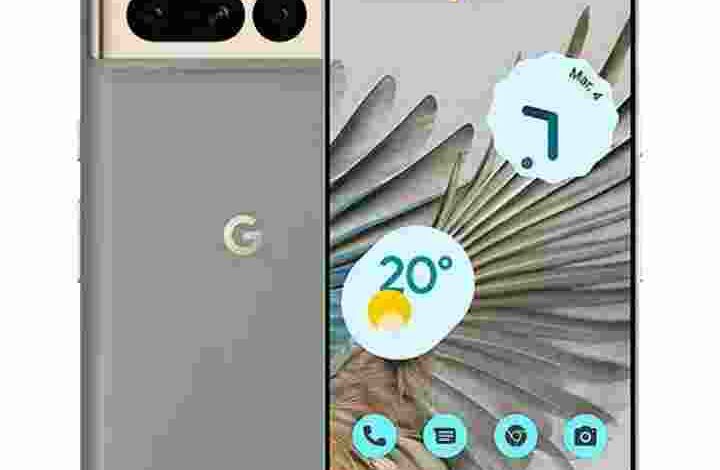
One of the finest Android smartphones available is the Google Pixel 7, the company’s most recent flagship model. It has an excellent camera, strong hardware, and a sleek appearance. Additionally, the Pixel 7 has a few distinctive characteristics that set it apart from the competition.
It has a new Night Sight mode that enables you to capture beautiful low-light photos as well as a new Google Assistant feature that lets you control your phone with your voice. For Android customers looking for a strong and dependable smartphone, the Pixel 7 is the ideal option. It is a response from Google to the iPhone 14.
Google Pixel 7 Design and Display
The Pixel 7 has an elegant and premium overall appearance. As opposed to the Pixel 6’s all-glass design, Google chose a metal frame and glass rear. Additionally, there is a matte-finished metal frame with curved sides. Additionally, it has a punch-hole display with thin borders around the screen, which conceals the front-facing camera. Similar in appearance, the Pixel 7 Pro has a larger monitor and a more obvious camera bar.
One distinctive aspect of the Pixel 7 is the camera band. The 5G phone’s camera bar is located in a designated area on the back and goes horizontally across it. The camera bar, which contains the phone’s camera system, is a different color from the rest of the device.
The bump is now slightly lower in relation to the Google Pixel 6 back camera, leaving more room around the top.
The Gorilla Glass Victus is used in the Google Pixel 7’s glass panels. The Google phone is dust- and water-resistant and has iP68 certification. The Google logo is not present on the rear of the phone, similar to the Pixel 6’s design. Instead, the Pixel 7’s lower rear panel sports a “G” logo. This basic and clean aesthetic is a key component of Google’s design philosophy.
The power and volume buttons are on the side, and the USB-C connection, which is situated between the two speaker grilles, is on the bottom. Obsidian, Lemongrass, and Snow are the three colors that are offered for the Google Pixel 7.
Google Pixel 7 Screen Display
The 6.3-inch AMOLED display on the Google Pixel 7 has a size of 2400 x 1080 pixels, giving it a 416 ppi density. The monitor also has a 90Hz refresh rate, which improves the smoothness of scrolling and animations in comparison to a 60Hz display.
Additionally, the Pixel 7 models’ displays enable HDR10+ and provide excellent color accuracy and contrast. The strongest glass available for cellphones, Corning Gorilla Glass Victus, is also used to shield the displays. For biometric identification, the displays also enable an in-display fingerprint sensor.
The display provides an excellent watching experience overall thanks to its rich colors, high contrast, and quick refresh rate. Even better for viewing videos, playing games, and browsing the web is the Pixel 6 Pro’s larger display, which has a higher resolution and faster refresh rate.
Its 20:9 aspect ratio and 84.9% screen-to-body ratio offer a more immersive viewing experience because the bezels and other surrounding components are less distracting. Due to less unused space on the front of the phone, it may also appear smaller and be easier to hold.
Google Pixel 7 Camera and Resolution
The Google Pixel 7’s camera system represents the biggest improvement. A 50-megapixel main camera and a 12-megapixel ultra-wide camera are part of the dual rear camera setup.
The main camera also has a multi-directional PDAF system, Laser AF, and OIS, which allows the autofocus points to cover a greater area of the camera sensor and detect phase differences from multiple directions. This enhances the autofocus’s speed and precision, enabling the camera to rapidly lock onto a subject and take sharp, in-focus pictures.
The ultrawide, on the other hand, has an f/2.2 aperture, 1.25 m pixel pitch, and 114 degrees of field of view, making it perfect for wide-angle scenes like landscapes and gatherings where you want to squeeze as much as possible into the frame.
The main camera has a sensor size of 1/1.31′′ optical format, which is a sizable one for a smartphone. Even in difficult lighting situations, this large sensor size, along with Google’s computational photography algorithms, makes it possible to take detailed, vibrant pictures with a good dynamic range and little noise.
Night Sight, Google’s low-light photography mode that produces stunning images even in poorly lit areas, is also supported by the Pixel phone. In order to produce a well-balanced image, the camera also supports HDR+ with bracketing, which takes multiple pictures at various exposures and combines them.
A 10.8MP selfie camera with a 92.8° field of vision, 1/3.1′′, 1.22m, and f/2.2 aperture is housed inside the front punch hole.
Even though the Pixel 7’s selfie camera’s pixel size is smaller than its back camera, it is still thought to be a decent size for a smartphone camera. You can take detailed and immersive wide-angle pictures and videos on the Google Pixel 7 thanks to the 10.8-megapixel sensor with 1.22-m pixel size and the large field of view.
The Tensor G2 chip, created especially for the Pixel 7 and 7 Pro, is what powers the Google Pixel 7. A system-on-a-chip (SoC) called the Tensor chip combines the CPU, GPU, and other parts into a singular unit.
Compared to earlier generations of smartphone chips, the Tensor chip’s 5-nanometer manufacturing method enables higher efficiency and performance. Additionally, a Tensor Processing Unit (TPU) specifically designed for machine learning duties is included, allowing for quicker and more effective AI and machine learning operations.
Google Pixel 7 Price in Nigeria
Prices for the Google Pixel 7 start at $ 559.99, C$ 649.99, £ 485.00, and € 585 at reputable international web retailers. In Nigeria, the Pixel 7 costs as little as $490,000.
Google Pixel 7 Battery Performance
A 4355mAh Li-Ion battery is included with the Google Pixel 7 for extended uses. Longer battery life compared to earlier Pixel versions should be possible thanks to the larger battery, the more effective Tensor chip, and optimizations in Android 13.
With normal use, Google claims that the smartphone can last up to a full day and can be charged up to 50% in just 30 minutes using the 20W USB-C rapid charger that comes with it. Reverse wireless charging is also supported, enabling you to power other compatible devices by placing them on the Pixel 7’s back.
Of course, a number of variables, such as your usage habits, screen brightness, and the applications you use, will affect the battery life. However, the bigger battery capacity and more effective hardware and software in the Pixel 7 should give most users a reliable amount of battery life.
The Pixel 7 has a variety of connectivity options, including Wi-Fi 6, Bluetooth 5.2, NFC, USB-C, and 5G, which offers faster download and upload rates than 4G LTE. In order to improve the user experience, the Pixel 7 also includes additional instruments like an accelerometer, gyroscope, proximity sensor, and ambient light sensor.
Google Pixel 7 Hardware and Software
The Tensor G2 chip, created especially for the Pixel 7 and 7 Pro, is what powers the Google Pixel 7. A system-on-a-chip (SoC) called the Tensor chip combines the CPU, GPU, and other parts into a singular unit.
The Tensor chip in the Pixel 7 has an octa-core CPU with two Arm Cortex-X1 cores with high performance and six efficiency cores, as well as a potent Arm Mali-G710 GPU for tasks requiring lots of graphics processing capacity. The chip also has 8GB of LPDDR5 RAM, which makes it a decent gaming phone and helps to guarantee smooth performance and quick app loading times. The internal capacity on this phone can be expanded to 256GB, but there is no MicroSD card slot.
The Google Pixel 7 also has a new always-on display with more customization options, better notifications, and improved speech recognition capabilities. It also runs the most recent version of Android (version 13).
Compared to earlier generations of smartphone chips, the Tensor chip’s 5-nanometer manufacturing method enables higher efficiency and performance. Additionally, a Tensor Processing Unit (TPU) specifically designed for machine learning duties is included, allowing for quicker and more effective AI and machine learning operations.

